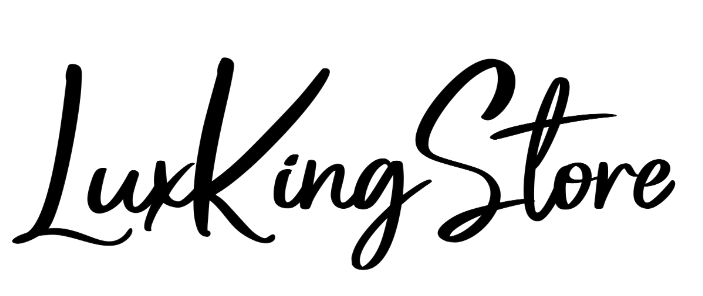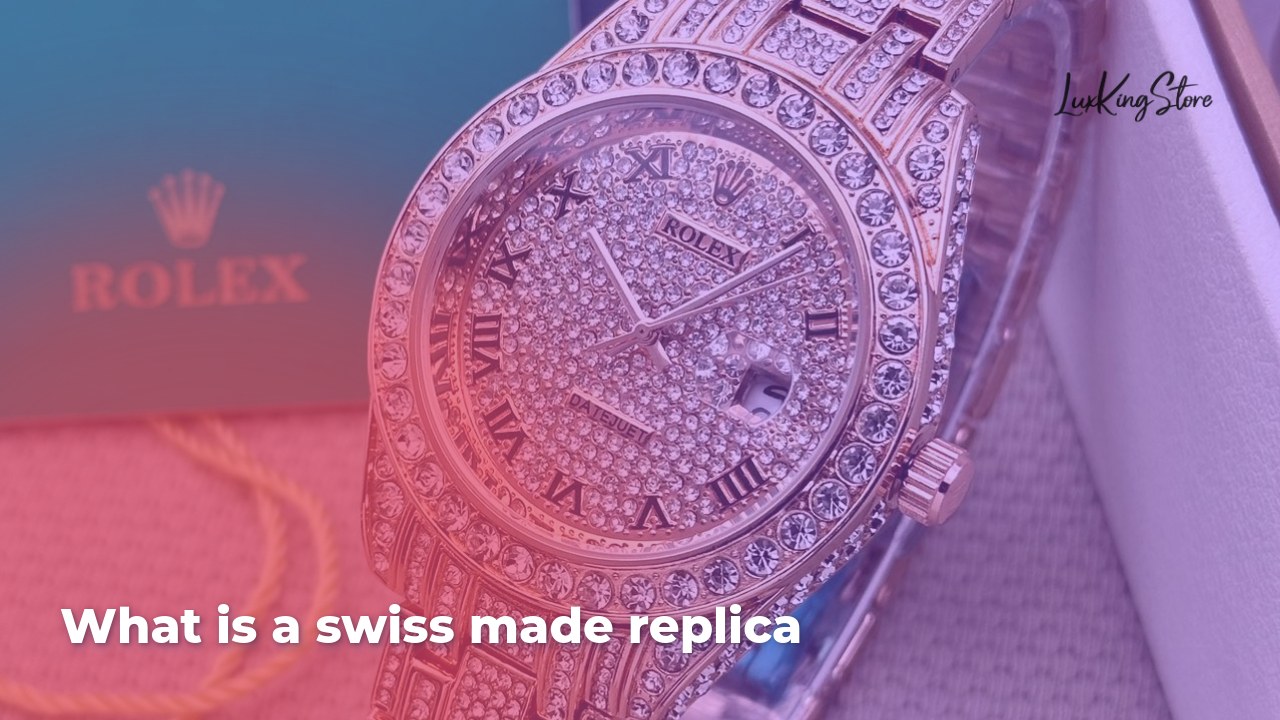What is a Swiss made replica?
What is a Swiss Made Replica?
In the world of luxury watches, the term “Swiss made” carries significant weight, synonymous with precision, craftsmanship, and unrivaled quality. However, a growing trend of Swiss made replicas has emerged, captivating those who desire the allure of luxury timepieces without the exorbitant price tag. These replicas are meticulously designed to mimic the aesthetics of authentic Swiss watches, enticing consumers with a look that echoes high-end brands. But what really distinguishes these replicas from their genuine counterparts, and are they worth considering? This article delves into the intricate details of What is a Swiss made replica? exploring their characteristics, legal implications, and the fine line between quality and imitation.
Definition of Swiss Made Replica
A Swiss made replica is a watch designed to imitate the appearance and branding of genuine Swiss timepieces, yet it lacks the rigorous production standards that characterize authentic Swiss craftsmanship. While these replicas may carry the coveted “Swiss” label, they are often produced outside of Switzerland, frequently in countries like China or India, where labor costs are lower. This practice raises substantial concerns regarding quality and legality, as these watches do not meet the stringent criteria set by the Swiss government for the “Swiss made” designation. Thus, while they may visually resemble luxury watches, they do not possess the same level of quality or prestige.
Characteristics of Swiss Made Replicas
Swiss made replicas are notable for a range of characteristics that make them appealing despite being counterfeit. Understanding these traits can help consumers navigate the often murky waters of purchasing a luxury watch replica.
- Visual Similarity:
- Swiss replicas are often designed to closely resemble well-known models from luxury brands such as Rolex, Omega, and Patek Philippe. They meticulously mimic aspects such as the dial layout, case design, and overall aesthetic appeal to create a convincing imitation.
- Quality Variance:
- While some replicas achieve a high degree of visual fidelity, they may differ significantly in terms of quality. High-quality Swiss made replicas might use better materials, leading to a more authentic look and feel. In contrast, lower-tier versions often resort to inferior materials, affecting durability and functionality.
- Material Comparison:
Feature Authentic Swiss Watches Swiss Made Replicas Case Material Solid stainless steel Plated or cheaper metals Movement Swiss automatic movement Varied quality movements Crystal Sapphire crystal Mineral or plastic
- Legal and Ethical Considerations:
- The production and sale of Swiss made replicas raise various legal issues, including trademark infringement. Many luxury brands actively discourage such practices, asserting that replicas undermine the craftsmanship and values associated with authentic Swiss timepieces.
- Marketing Strategies:
- Replicas often use savvy marketing techniques, presenting themselves as luxury goods at a fraction of the genuine price. This strategy capitalizes on the aspirational aspect of luxury watch ownership, making them increasingly popular with a broader audience.
- Consumer Appeal:
- The allure of owning a piece that resembles a luxury watch without the associated costs appeals to a wide demographic. This accessibility, however, comes with ethical implications regarding authenticity and craftsmanship.

Legal Standards and Certifications for Swiss Made Replicas
The term “Swiss made” is legally protected under strict regulations that govern the production of Swiss watches. These regulations emphasize the importance of quality, craftsmanship, and authenticity in the watchmaking process. To gain the Swiss made designation, a watch must adhere to specific criteria:
- Production Costs:
- At least 60% of the production cost must be incurred within Switzerland, ensuring that a significant portion of the manufacturing process occurs in the country known for its horological excellence.
- Final Assembly:
- The encasing of the watch must occur in Switzerland, allowing for quality control measures to be applied throughout the assembly process.
- Swiss Movement:
- A genuine Swiss watch must contain a Swiss-made movement, which undergoes rigorous standards for materials and craftsmanship.
- Certification Requirements:
- Authentic Swiss watches often come with certifications verifying their origin and quality, including documents from the Swiss Watch Federation.
On the other hand, Swiss made replicas generally do not meet these legal standards, often produced in countries that do not comply with the stringent regulations. This lack of adherence to the Swiss made standard not only impacts the quality of the products but also raises questions about their legitimacy and the ethics of purchasing such items. Here is a comparative look at the legalities involved:
| Feature | Authentic Swiss Watches | Swiss Made Replicas |
|---|---|---|
| Legal Protection | Fully protected by Swiss laws | Often infringe Swiss trademarks |
| Certification | Issued by Swiss authorities | Lacks genuine certification |
| Country of Manufacture | Primarily Switzerland | Typically abroad (China, India, etc.) |
| Quality Control | Stringent legal standards | Limited or absent |
Comparison of Swiss Made Replicas and Original Swiss Watches
To truly understand the essence of Swiss made replicas, it is essential to compare them with authentic Swiss watches. This comparison highlights the key differences between the two, reflecting their respective qualities, craftsmanship, and price points.
Swiss made replicas are designed to resemble genuine timepieces, yet they do not possess the same standard of quality and authenticity. Understanding these comparisons enhances consumer awareness and guides informed purchasing decisions.
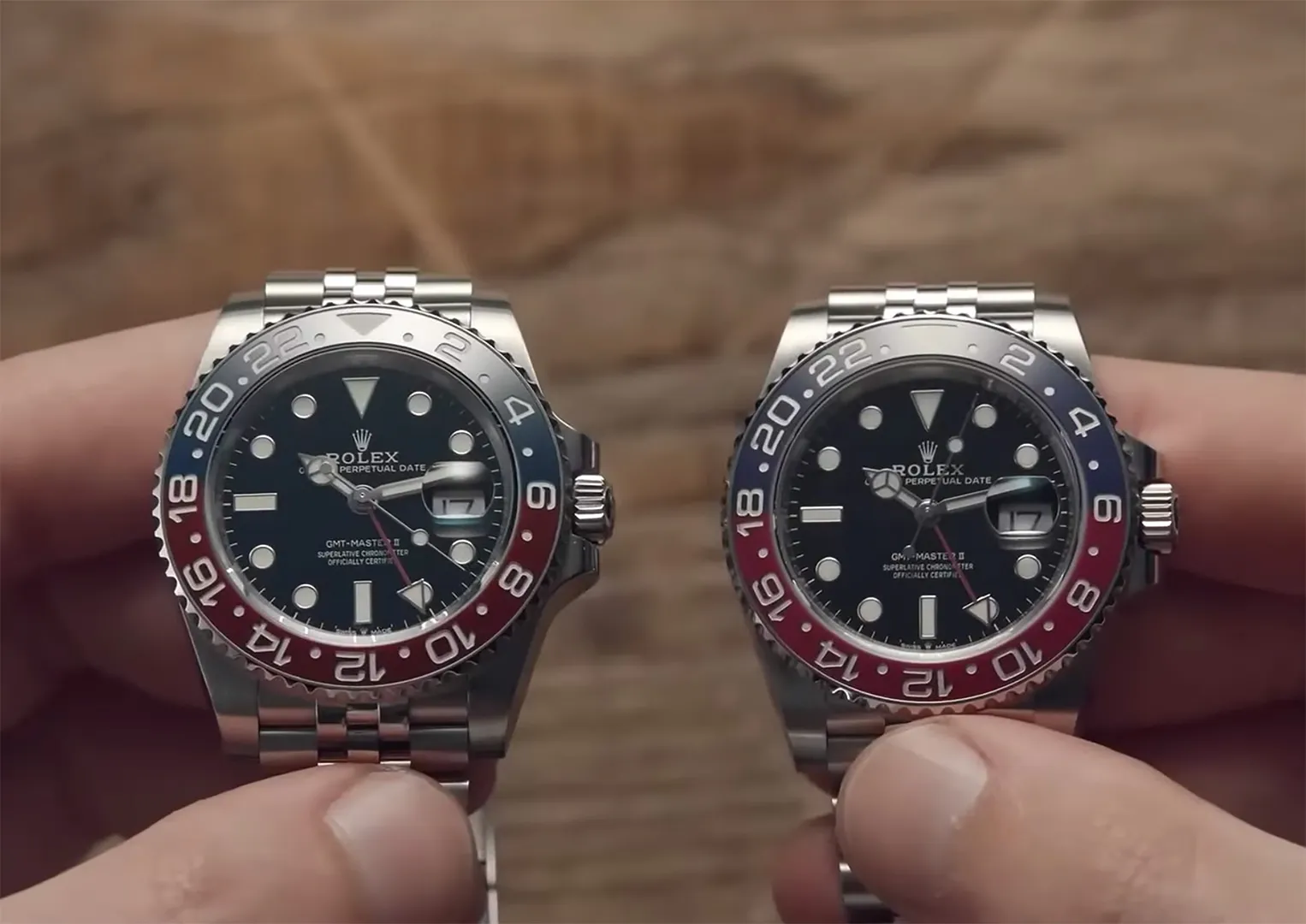
Quality Differences Between Swiss Made Replicas and Authentic Swiss Watches
One of the most striking differences between Swiss made replicas and authentic Swiss watches lies in their quality. Authentic Swiss watches are characterized by exceptional materials and craftsmanship, while replicas often have numerous shortcomings.
- Materials:
- Authentic Watches: Constructed from high-quality materials such as stainless steel, genuine leather, and sapphire crystal, ensuring durability and a luxurious feel.
- Replicas: Usually made from lower-tier materials, which may look similar at first glance but are less durable and more prone to wear and tear over time.
- Movement:
- Authentic Watches: Many Swiss watches utilize in-house movements that are meticulously crafted for precision, longevity, and reliability. Brands like Audemars Piguet and Rolex exemplify this commitment to quality, using movements that require years of experience and technological ingenuity to create.
- Replicas: Often feature simple, mass-produced movements that compromise accuracy and reliability. Many replicas use quartz movements, which lack the intricate craftsmanship found in mechanical watchmaking.
- Aesthetics:
- Authentic Watches: Present an elegance that stems from flawless finishes and intricate detailing. The craftsmanship is evident in the careful weight and balance of the watch as well as the smooth operation of the mechanisms within.
- Replicas: While some may be visually convincing, the details often reveal their true nature. Lapses in attention to detail such as the weight, engravings, and overall finishing can indicate a watch’s status as a mere replica.
- Warranty and Support:
- Authentic Watches: Usually provide comprehensive warranties and customer support for repairs and maintenance, highlighting a commitment to customer satisfaction and product performance.
- Replicas: Generally do not offer warranties or support, making any issues with the watch a potential financial loss for the buyer.
- Expectations:
- Consumers of Authentic Watches: Often expect to invest in a piece that not only serves as a timekeeping instrument but also as a status symbol, likely to appreciate in value over time.
- Consumers of Replicas: May seek a temporary solution or merely want the appearance of luxury without the commitment, leading to disparate expectations between the two markets.
By delineating these differences, consumers can better understand the value of investing in genuine Swiss craftsmanship versus the allure of a Swiss made replica.
Price Comparison of Swiss Made Replicas and Original Swiss Timepieces
Price is often a decisive factor when consumers consider the purchase of luxury watches, and the disparity between authentic Swiss watches and Swiss made replicas is substantial. Understanding this difference can help buyers navigate their options effectively.
- Investment vs. Expense:
- Authentic Swiss Watches: The cost of genuine Swiss timepieces can range from a few thousand dollars to several hundred thousand, influenced by brand, rarity, and craftsmanship. For example, a Rolex can start at $5,000 and easily climb over $50,000 or more depending on the model and desirability.
- Swiss Made Replicas: In stark contrast, replicas are typically priced between $100 and $1,000, allowing consumers to achieve the look of luxury for a fraction of the price. This price point appeals to those who desire a semblance of prestige without the financial burden.
- Understanding Value:
- When evaluating price, it’s crucial for consumers to consider the inherent value of authenticity. Brand prestige, coupled with quality craftsmanship, contributes to the long-term value of genuine Swiss watches, often making them appealing investments.
- Replicas, while more accessible financially, may not hold any long-term value, relying instead on their ability to mimic appearance without reliability.
- Market Trends:
- The disparity in pricing continues to influence how consumers engage with both markets. As genuine luxury watch prices rise, many seek out more affordable alternatives, furthering the allure of the replica market.
- Price Breakdown:
Aspect Authentic Swiss Watches Swiss Made Replicas Starting Price $5,000 to $50,000+ $100 to $1,000+ Potential for Appreciation Yes, often increases in value Usually depreciates over time Insurance / Warranty Available Rare or non-existent
By analyzing the price differences, consumers can weigh the advantages of investing in authentic Swiss watches versus opting for a more affordable imitation.
Types of Swiss Made Replicas
Having explored the significant differences between Swiss made replicas and authentic Swiss watches, it is essential to recognize the various types of replicas available in the market. This classification helps consumers understand the options they have when considering a watch purchase.
- Mechanical Swiss Made Replicas:
- These replicas are often marketed towards watch enthusiasts who appreciate the artistry of mechanical movements. Designed to imitate the internal workings of authentic watches, these replicas feature intricate gears and springs. They can be manual or automatic, capturing elements of traditional Swiss watchmaking. Mechanical replicas appeal to consumers who value craftsmanship and the aesthetic of high-end models.
- Quartz Swiss Made Replicas:
- These replicas utilize battery-powered movements, making them more affordable and precise compared to mechanical counterparts. Quartz technology offers reliable timekeeping and low maintenance. Often designed with aesthetics in mind, quartz replicas are popular for their sleek appearance without the intricate details found in mechanical versions. They typically attract buyers looking for luxury aesthetics without a high cost.
- High-End vs. Low-End Replicas:
- High-end replicas strive for a closer resemblance to authentic watches in both appearance and materials. These versions may include Swiss movements or components, elevating their quality while keeping costs down. On the contrary, low-end replicas may emphasize affordability and visual appeal but often sacrifice quality and durability.
- Brand-Specific Replicas:
- Some replicas are tailored specifically to mimic the aesthetics of certain high-demand brands such as Rolex, Omega, or Patek Philippe. These specialized fakes often focus on replicating signature styles closely, including logos and unique design elements.
In conclusion, recognizing the types of Swiss made replicas and their features allows consumers to make more informed decisions about which imitation aligns with their desires and budget.
Mechanical vs. Quartz Swiss Made Replicas
The difference between mechanical and quartz Swiss made replicas reflects variations in both craftsmanship and consumer preferences. Understanding these distinctions is essential for buyers exploring their options.
- Mechanical Swiss Made Replicas:
- Craftsmanship: Emulating traditional watchmaking techniques, mechanical replicas are designed with intricate inner workings, showcasing the artistry associated with luxury watch brands. Even though they lack the precision of authentic Swiss movements, they often prioritize aesthetic detail, making them more favorable for enthusiasts.
- Variations: Mechanical replicas can come in various forms, including manual, which requires winding, or automatic, which winds itself through wrist movement. Their complexity often appeals to individuals who appreciate the history and craftsmanship involved in mechanical watches.
- Quartz Swiss Made Replicas:
- Precision and Maintenance: Quartz watches, utilizing battery-powered mechanisms, offer more precise timekeeping and require less maintenance than their mechanical counterparts, making them a practical option for everyday wear. This technological advantage allows for a more affordable production cost, translating to lower prices for consumers.
- Durability and Functionality: Quartz replicas often withstand daily wear better than mechanical ones, as they do not have as many delicate components susceptible to damage. For buyers seeking reliability without the luxury aesthetic, quartz replicas become an attractive choice.
- Consumer Choice:
- The preference for one type over the other often aligns with a consumer’s appreciation for artistry versus practicality. Mechanical replicas may appeal to those who value the history and craftsmanship associated with watchmaking. Meanwhile, quartz replicas attract a broader audience seeking stylish yet practical watches.
In summary, understanding the differences between mechanical and quartz Swiss made replicas establishes a clearer picture of consumer options and preferences.
Different Brands Offering Swiss Made Replicas
The market for Swiss made replicas features numerous brands, each attempting to replicate coveted luxury models. This section highlights some notable brands in the realm of Swiss replicas, shedding light on their offerings and characteristics.
- Rolex Replicas:
- Arguably the most counterfeited luxury watch globally, Rolex replicas are highly sought after due to the brand’s prestige and desirability. Various companies produce these replicas, with prices ranging dramatically based on quality. Some high-end replicas can closely mimic features of authentic Rolex models.
- Omega Replicas:
- Omega, known for its meticulous design and durability, also sees a thriving market for replicas. Omega replicas often attempt to capture iconic models, such as the Speedmaster or Seamaster, and are designed to resemble the original aesthetically.
- Patek Philippe Replicas:
- Patek Philippe replicas cater to a more niche audience. These replicas focus on high-end craftsmanship and details, mimicking the complex designs and aesthetics of original Patek timepieces.
- Breitling Replicas:
- Known for their robust construction and sporty designs, Breitling watches have inspired countless replicas. These replicas often focus on functionality while maintaining a striking appearance.
- Tag Heuer Replicas:
- Targeted towards the sports and luxury niche, Tag Heuer replicas emphasize a sporty aesthetic without sacrificing style. The brand’s focus on innovation resonates in the available replicas.
- Specialized Replica Makers:
- Beyond standard brand replicas, there are also specialized companies that focus solely on producing high-quality Swiss made replicas, investing in materials and craftsmanship to create convincing imitations of luxury watches.
Through exploring these brands, it’s evident how the popularity of Swiss made replicas not only speaks to market demand but also reflects a broader fascination with the allure of luxury watch ownership without the corresponding costs.
Factors Influencing the Popularity of Swiss Made Replicas
Various factors contribute to the growing popularity of Swiss made replicas in today’s luxury watch market, shaping consumer preferences and market dynamics.
- Affordability:
- In a world where luxury watch prices can soar into astronomical figures, the affordability of Swiss made replicas creates an appealing alternative for consumers. They provide the chance to experience luxury aesthetics without the financial burden associated with genuine watches.
- Aspirational Value:
- The social status linked to luxury watches drives many consumers to seek out replicas as a means to participate in luxury culture. Owning a piece that resembles a prestigious brand often fulfills the desire for status and recognition.
- Increased Accessibility:
- The rise of online shopping platforms and social media has made Swiss made replicas more accessible. Consumers can easily find and purchase these replicas without ever needing to visit a physical store, expanding the reach of the replica market.
- Advancements in Technology:
- Technological advancements in manufacturing and materials have allowed for the production of higher-quality replicas that closely resemble their authentic counterparts. This relentless pursuit of quality makes replicas more appealing.
- Market Demand:
- As the prices of genuine luxury watches continue to rise, many consumers turn to replicas, further fueling market demand. Additionally, the growing middle class across various regions has led to an increase in individuals seeking luxury experiences without the associated costs.
By understanding these influential factors, we can better comprehend why Swiss made replicas have carved out a niche within the luxury watch industry.
Consumer Perceptions of Swiss Made Replicas
Consumer perceptions play a pivotal role in shaping the market for Swiss made replicas, reflecting a myriad of social, economic, and cultural factors. Understanding these perceptions can help articulate the value and risks associated with these imitations.
- Value for Money:
- Many consumers perceive Swiss made replicas as a cost-effective way to achieve the aesthetics of luxury watches. For individuals who may not have the financial capacity to invest in authentic pieces, replicas become an attractive alternative.
- Social Aspirations:
- Swiss made replicas often fulfill a desire for social recognition. Consumers view owning a replica as a way to participate in luxury culture without the financial investment. This aspirational mindset resonates, especially among younger demographics eager to display status symbols.
- Skepticism and Criticism:
- While allure exists, there is also skepticism regarding the ethics of purchasing replicas. As consumers become more educated, discussions around authenticity, innovation, and intellectual property rights come to the forefront, prompting some individuals to avoid replicas altogether.
- Influence of Social Media:
- Social media platforms have amplified the visibility of replicas, with influencers and celebrities endorsing their use as fashionable accessories. This trend can shift consumer perceptions, normalizing the use of replicas alongside authentic pieces.
- Quality Awareness:
- As consumers become more knowledgeable about the potential pitfalls of purchasing replicas, awareness surrounding quality and craftsmanship develops. Buyers are more likely to conduct research on brands and products before making a purchase, reflecting a growing trend in consumer responsibility.
The perceptions surrounding Swiss made replicas are complex and multifaceted, revealing both the appeal and pitfalls associated with imitating luxury watch brands.
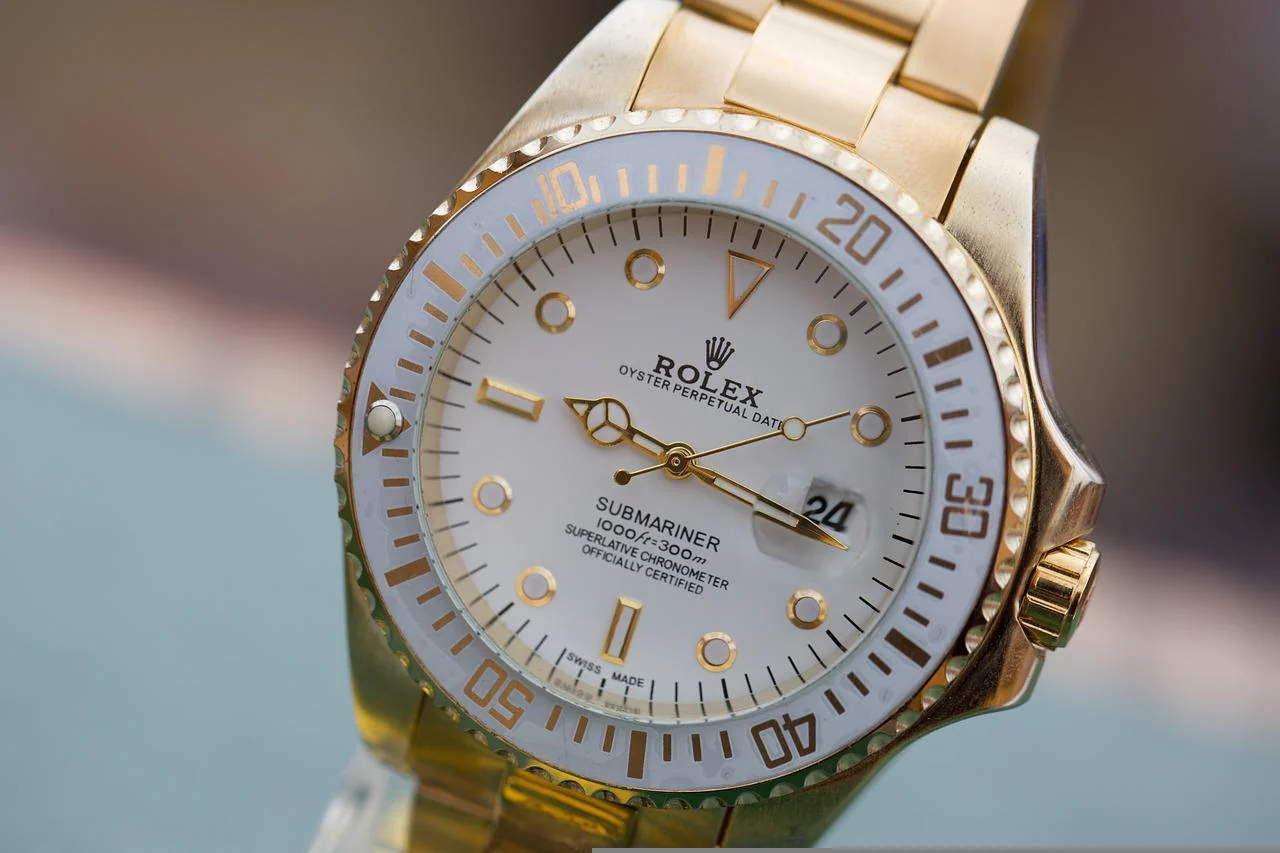
Market Trends for Swiss Made Replicas
The Swiss watch industry, renowned for its heritage and prestige, has witnessed evolving market trends shaped by consumer demand and technological innovation. Analyzing these trends provides insights into the future trajectory of Swiss made replicas.
- Growing Acceptance and Legitimization:
- As replicas become more prevalent, there is a growing acceptance among consumers. This reflects a shift in the luxury watch narrative, prompting discussions on the role of replicas and their place in luxury culture.
- Quality Improvements:
- Continuous advancements in manufacturing technology have led to an increase in the quality of Swiss made replicas. As counterfeiters adopt more sophisticated techniques, the line between authentic and replica watches may further blur, making it imperative for consumers to conduct thorough research.
- Emergence of Community:
- An online community centered around enthusiasts of replicas is rising. This shift enables discussions about quality, legality, and ethics, challenging conventional narratives around watch ownership and encouraging informed consumerism.
- Focus on Online Retail:
- With the growing popularity of e-commerce, many brands are expanding their online presence. Digital marketing strategies enable replica manufacturers to reach a broader audience, diversifying their consumer base beyond traditional channels.
- Sustainability Trends:
- As consumers increasingly value sustainability, discussions around the environmental impact of producing luxury watches have surfaced. Replicas may capitalize on this trend by marketing themselves as more environmentally friendly alternatives to the high-resource original counterparts.
The trends in the Swiss made replica market paint a picture of a rapidly evolving landscape, highlighting the continued interest and the complexities associated with purchasing fake luxury goods.
Risks and Considerations When Purchasing Swiss Made Replicas
While the allure of Swiss made replicas may be strong, potential buyers should weigh several factors before making a decision. Engaging with these risks effectively minimizes complications and ethical dilemmas.
- Legal Implications:
- The laws surrounding counterfeit goods can be stringent, and buyers may unknowingly find themselves on the wrong side of legal standards. Depending on jurisdiction, purchasing or selling counterfeits may carry serious legal consequences.
- Quality Assurance:
- Many replicas fail to live up to the quality expectations set by consumers. Poor manufacturing practices often lead to subpar products that may not only break down quickly but also lack the aesthetic appeal of the genuine article.
- Ethical Considerations:
- Engaging with the replica market raises ethical questions regarding intellectual property rights and the impact on the original brands. This ethical dilemma prompts consumers to reconsider whether purchasing a replica aligns with their values.
- Scams and Fraudulent Activity:
- The rise of deceitful online platforms can make purchasing replicas risky. Many websites may showcase attractive deals yet deliver low-quality replicas or fail to deliver products altogether. Awareness of potential scams is crucial in mitigating risk.
- Wasted Investment:
- The financial implications of purchasing a replica might not be immediately clear. With limited or no resale value, consumers risk wasting money on a product that does not appreciate in value or offer comparable satisfaction to an authentic watch.
By considering these factors, consumers can navigate the complexities of purchasing Swiss made replicas while safeguarding their interests.
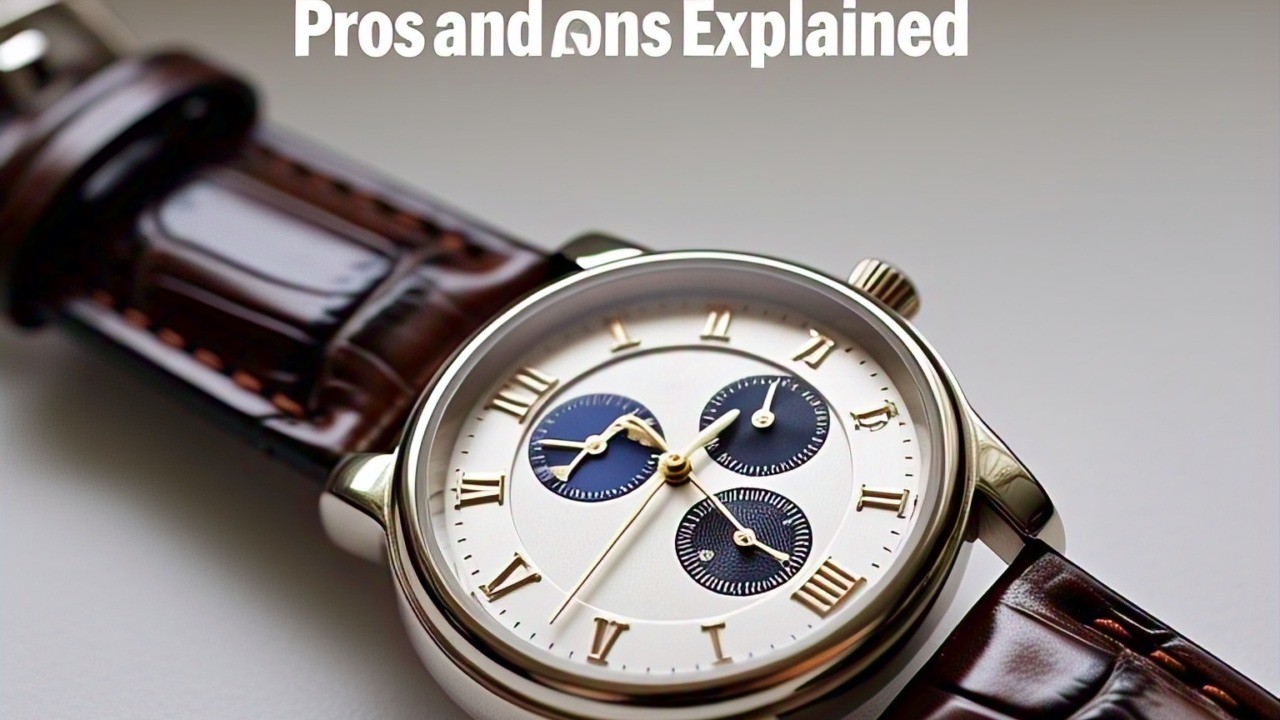
Common Scams and How to Avoid Them
Navigating the market for Swiss made replicas requires vigilance, as scams and fraudulent practices are prevalent. Being aware of potential pitfalls and learning how to avoid them is essential for anyone considering a replica purchase.
- Misleading Websites:
- Many scams feature websites that showcase genuine images and claims of authenticity, drawing unsuspecting consumers into purchasing low-quality fakes. To identify these scams, verify website domains and check for contact information and customer reviews before proceeding.
- Unrealistic Pricing:
- If a deal seems too good to be true, it usually is. Engaging with prices that are significantly lower than market value is a red flag. Authentic Swiss watches rarely come cheap, and a drastically reduced price may indicate a scam.
- Poor Product Presentation:
- Quality representations matter. Websites showcasing low-resolution images or minimal information should raise concerns. Genuine sellers present their products with detailed descriptions, high-quality images, and transparent information about warranties and returns.
- Lack of Customer Support:
- Reputable dealers should offer reliable customers support to address inquiries and concerns. If a seller lacks contact information or responsiveness, it may be a sign to avoid that retailer.
- Research Before Purchase:
- Before purchasing a replica, conduct thorough research on trusted brands and retailers. Engage with user reviews and forums for firsthand accounts of other customers’ experiences to gauge a seller’s trustworthiness.
By following these guidelines, consumers can better protect themselves from the risks inherent in the Swiss made replica market.
Impact on the Swiss Watch Industry
The rise of Swiss made replicas has significantly impacted the landscape of the Swiss watch industry, influencing both consumer behavior and brand strategies. Understanding these effects provides insights into the broader implications of replicas on legitimate watchmaking.
- Brand Reputation:
- The proliferation of replicas can dilute the value and exclusivity of authentic Swiss brands, leading to potential brand erosion. Luxury watchmakers face challenges in maintaining their image and consumer trust amidst growing counterfeiting.
- Legal Battles:
- Many luxury brands are increasingly investing in legal efforts to combat counterfeiting. This has resulted in extensive litigation, regulatory changes, and collaboration with law enforcement agencies to protect their intellectual property rights.
- Enhanced Security Measures:
- In response to the threat posed by replicas, Swiss watch manufacturers are implementing enhanced security features and authentication methods to distinguish their products from fakes. These measures often involve innovative technology, such as tracking tools and specialized packaging.
- Market Adaptation:
- As the replica market grows, authentic brands are adapting their marketing strategies to educate consumers about quality and craftsmanship. By highlighting the value of authenticity over aesthetics, these brands aim to differentiate themselves further from replicas.
- Consumer Education:
- The rising presence of replicas has prompted luxury brands to prioritize consumer education. By informing potential buyers about the importance of authentic craftsmanship and the repercussions of supporting counterfeiting, brands strive to preserve their heritage.
In summary, the impact of Swiss made replicas extends beyond consumer choices, influencing market dynamics and shifting the paradigms within the Swiss watch industry.
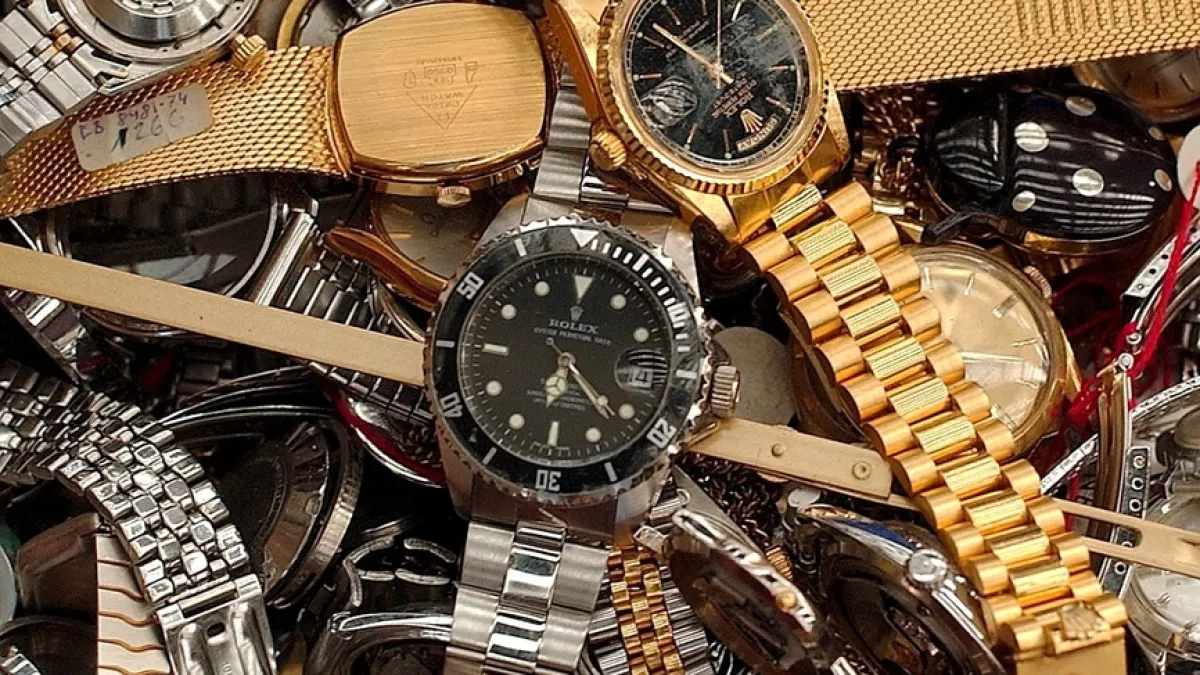
How to Identify a Genuine Swiss Made Replica
When considering the purchase of Swiss made replicas, consumers must develop skills for identifying genuine products amidst a sea of imitations. Recognizing key signs of authenticity can enhance buyer confidence.
- Price Point Evaluation:
- A genuine Swiss made watch will typically carry a hefty price tag, starting from a minimum of 5,000 CHF. If a replica is priced significantly lower, it often signals a lack of authenticity.
- Sales Point Verification:
- Purchase Swiss watches only from authorized dealers listed on official brand websites. If the seller’s legitimacy is in doubt, it’s best to refrain from making a purchase.
- Examine Engravings and Details:
- Authentic watches will have sharp, accurate engravings. Use magnification to examine details carefully; poorly executed engravings suggest a replica.
- Inspect the Movement:
- Genuine Swiss movements offer a smooth, sweeping second hand that reflects quality craftsmanship. Replica movements may display a ticking motion typical of cheaper imitations.
- Weight and Materials Assessment:
- Authentic Swiss watches use high-quality materials that feel weighty and substantial. In contrast, lightweight replicas often indicate inferior construction.
- Documentation Check:
- Authentic Swiss watches come with certificates of authenticity and warranty details. Ensure that the watch’s serial number matches the documentation provided.
- Overall Craftsmanship:
- Examine the watch’s finish for meticulous craftsmanship. No visible defects or inconsistencies should be present in genuine pieces, unlike lower-quality replicas.
By developing awareness of these identifying characteristics, consumers can feel more confident when purchasing Swiss made replicas without compromising quality.

Signs of Quality in Swiss Made Replicas
For buyers considering Swiss made replicas, recognizing signs of quality can distinguish higher-end imitations from subpar options. By identifying quality indicators, consumers can make more informed purchasing decisions.
- Usage of Materials:
- High-quality replicas often utilize durable materials, such as stainless steel or sapphire crystal, closely imitating the components of genuine Swiss watches. Weighing the watch can also provide an initial indication; heavier watches often signal better materials.
- Movement Performance:
- Quality Swiss replicas strive to emulate authentic movement functions accurately. A smooth-lifting hand, either automatic or quartz, embodies quality craftsmanship, whereas staccato ticking suggests lesser alternatives.
- Detailing and Finish:
- Examine the details, such as engravings and overall finish. Authentic watches deliver precise details and seamless integration, while poor engraving quality indicates a lack of craftsmanship.
- Glass Clarity:
- The quality of the watch crystal affects visibility and aesthetics. Sapphire crystals are preferred as they are scratch-resistant and durable. Any signs of distortion or scratches on the glass can indicate lower-quality replicas.
- Branding Consistency:
- Quality replicas will feature consistent branding that aligns closely with the original name. Inaccurate logos, fonts, or omissions should raise alarm bells.
- Vendor Reputation:
- Purchasing from a reputable vendor with a history of providing quality replicas increases the likelihood of receiving a high-grade product. Customer reviews and testimonials can guide buyers regarding the vendor’s trustworthiness.
Understanding these signs can empower consumers to identify higher-quality Swiss made replicas while minimizing the risk associated with their purchase.
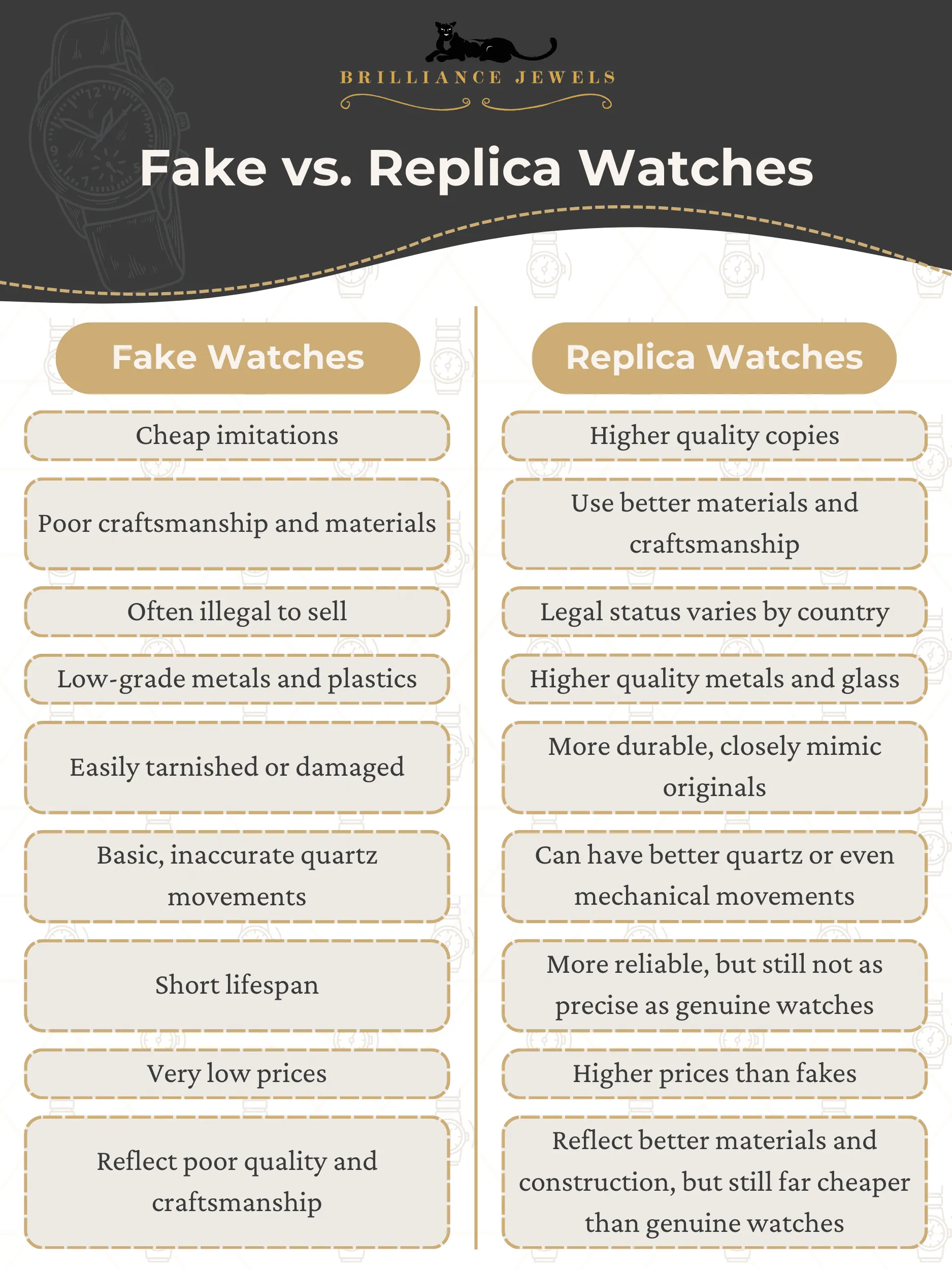
Tips for Verifying Authenticity of Swiss Made Replicas
When venturing into the Swiss made replica market, buyers should employ effective strategies for verifying authenticity. Implementing these tips can help mitigate the risk of purchasing counterfeit goods.
- Research Brands Thoroughly:
- Understanding the specific brand’s characteristics and common details enhances awareness. Familiarizing oneself with the authentic features can help identify inconsistencies in replicas.
- Engage with Trusted Retailers:
- When considering replicas, utilize established, reputable retailers who provide warranties or authenticity guarantees. Consumer protections can safeguard against fraudulent sales.
- Request Documentation:
- Ensure that the seller provides adequate documentation for the replica, including serial numbers and certifications if available. Most reputable sellers will be transparent in sharing the documentation with buyers.
- Conduct Comparative Analysis:
- When possible, compare potential purchases with a genuine model or reference images from brand-specific websites. Analyzing side-by-side can unveil discrepancies in design or function.
- Examine Return Policies:
- A reputable seller will offer a reasonable return policy, reflecting confidence in the quality of their product. Evaluate the terms of service and return policies carefully before making a purchase.
- Foster Discussion Within Community Forums:
- Engaging in discussions within watch enthusiast communities or forums can provide insights into particular brands, shared experiences with replicas, and tips from seasoned collectors.
By following these tips, consumers can bolster their confidence when exploring Swiss made replicas, ensuring a more satisfying and secure purchasing experience.
Frequently Asked Questions (FAQs)
1. What distinguishes a Swiss made replica from an authentic Swiss watch?
A Swiss made replica is designed to mimic authentic Swiss watches but lacks the craftsmanship, quality materials, and legal protections that genuine Swiss timepieces possess.
2. Are Swiss made replicas legal to buy and sell?
While buying and owning replicas may not incur legal penalties, selling counterfeit goods can result in legal repercussions. It’s crucial to understand local laws regarding counterfeit products.
3. How can I ensure the quality of a Swiss made replica before purchasing?
Look for reputable sellers, scrutinize materials, check for warranties, engage in consumer discussions online, and compare with authentic models to gauge quality.
4. Why are Swiss made replicas so popular?
Their popularity stems from accessibility, lower price points, the allure of luxury aesthetics, and the desire for social recognition without significant financial investment.
5. Can I resell a Swiss made replica?
Unlike genuine Swiss watches, replicas may have negligible resale value, as they are often seen as counterfeit goods. Buyers typically purchase replicas for personal use rather than investment.
Key Takeaways
- Swiss made replicas strive to imitate authentic luxury watches, but significant differences exist in quality and legality.
- Legal standards protect the “Swiss made” label; replicas often fail to meet these requirements.
- Price differences are substantial, with replicas ranging from $100 to $1,000, while authentic Swiss watches can fetch thousands.
- Consumer perceptions and market trends signify the demand for accessible luxury.
- Identifying genuine replicas requires vigilance concerning quality, vendor reputation, and accurate branding.
In conclusion, Swiss made replicas occupy a complex and intriguing space within the luxury watch market. They allure consumers with their aesthetic appeal at a mere fraction of the cost of authentic Swiss timepieces. However, potential buyers must navigate the complexities of quality, legal considerations, and consumer perceptions surrounding these imitations. By understanding the nuances and risks associated with Swiss made replicas, individuals can make more informed choices that align with their values and expectations. Whether opting for an authentic piece or exploring the replica world, awareness and informed purchasing ultimately lead to greater satisfaction in one’s watch collection.
Google Search Suggestions:
- What is a Swiss made replica?
- How to identify genuine Swiss made replicas
- Characteristics of Swiss made watches
- Price comparison between original Swiss and replicas
- Top brands of Swiss made replica watches
